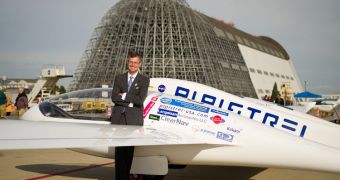The CAFE Green Flight Challenge – one of the most respected and important prizes awarded for green aviation – concluded recently, and NASA has just announced the winners. According to the agency, this challenge has the potential to change the aviation industry in the coming years.
Basically, the competition revolves around asking a number of teams to develop more fuel-efficient aircraft, or electric airplanes. This could very well represent the start of a new industry, NASA officials say, as well as a spark for creating new jobs and economic revenues.
The CAFE Green Flight Challenge is currently sponsored by Google. The Internet giant became involved in this endeavor because of the potential the competition has a creating new, advanced industry, befitting of the 21st century.
NASA announces that team Pipistrel-USA.com of State College, Pennsylvania, won the first prize, which amounts to $1.35 million (€1.02 million). The runner-up team, Ramona, California-based eGenius, won $120,000 (roughly €90.800).
The final stage of the challenge took place above the Charles M. Schulz Sonoma County Airport in Santa Rosa, California. Of the original 14 teams that registered for the competition, only three were successful in meeting all the requirements necessary to qualify for the final test.
Under the terms of a contract it has with NASA, the Comparative Aircraft Flight Efficiency (CAFE) Foundation managed the test and associated logistics efforts. Officials at the organization say that one of the main goal of the challenge was to have competitors fly 200 miles in less than two hours
That is the equivalent of 321 kilometers flown at a level of fuel consumption of less than one gallon of fuel per occupant. The same type of efficiency was required of electrical engines in the challenge too.
“NASA congratulates Pipistrel-USA.com for proving that ultra-efficient aviation is within our grasp. Today we've shown that electric aircraft have moved beyond science fiction and are now in the realm of practice,” NASA acting Chief Technologist Joe Parrish says.
“Two years ago the thought of flying 200 miles at 100 mph in an electric aircraft was pure science fiction. Now, we are all looking forward to the future of electric aviation,” says Team Pipistrel-USA.com leader, Jack W. Langelaan.
“I'm proud that Pipistrel won, they've been a leader in getting these things into production, and the team really deserves it, and worked hard to win this prize,” the team leader of eGenius, Eric Raymond, says.

 14 DAY TRIAL //
14 DAY TRIAL //